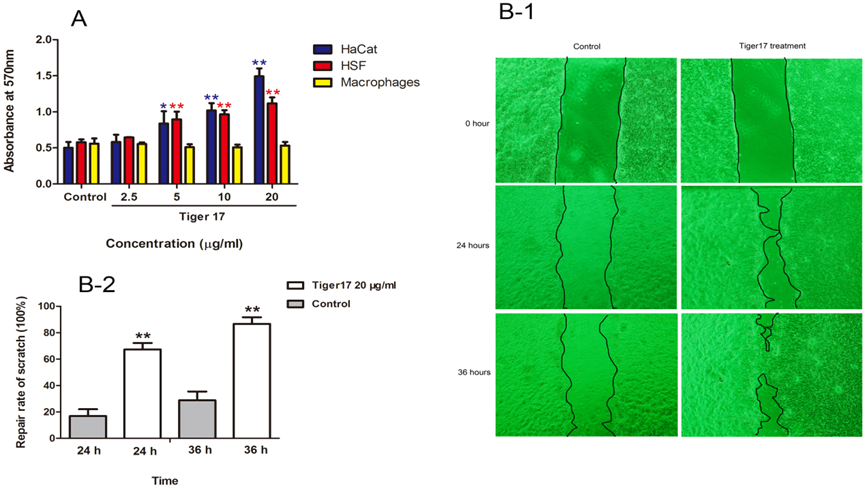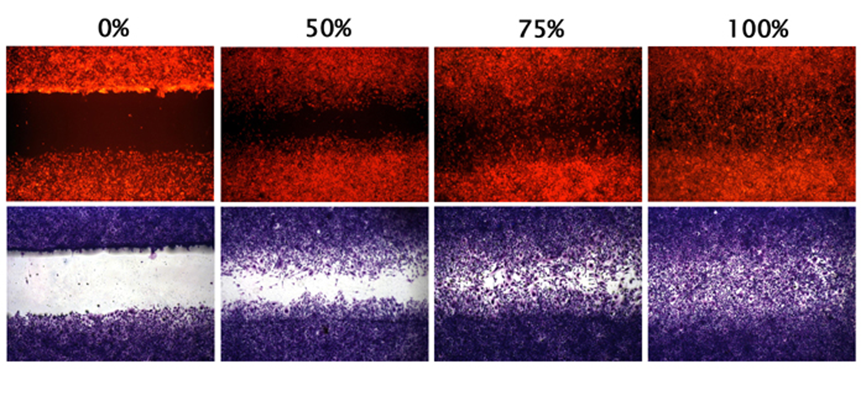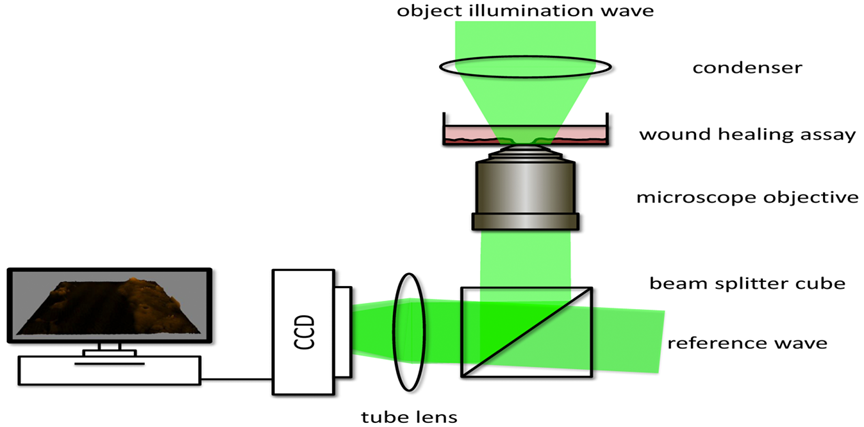Many cell assays have been developed to quantify the ability of various substances such as chemokines to regulate cell migration or cell invasion, which is a crucial part of many studies including would healing, immune response and cancer metastasis. Among all of them, the cell scratch assay is the most widely used to study the coordinated cell movement, since the cell scratch assay is appealingly simple, inexpensive and well established type of cell migration assay. Moreover, the cell scratch assay is particularly suitable to study different kinds of cell interactions including the interactions of cells with extracellular matrix (ECM) and cell-cell interactions. And this assay is usually applied to study wound healing, angiogenesis etc.
 Figure1. The experimental results of cell scratch assay
Figure1. The experimental results of cell scratch assay
The cell scratch assay which makes the research of cell migration straightforward and economical is based on the observation of a new artificial gap, so called “scratch”, on a confluent cell monolayer. In this assay, a gap, so called “scratch”, is created by physical exclusion or by removing the cells from the area through other means including mechanical, thermal or chemical damage in a monolayer. Then, cell migration toward the gap is monitored and often quantitated by capture of images at the beginning and regular intervals during cell migration to close the scratch. The rate of cell migration is determined by comparison of the images. This assay is convenient and versatile, which can be easily adjusted for different purpose. And cell scratch assay can also be applied for a high throughput screen platform to obtain the better results.
 Figure2. The experimental results of cell scratch assay
Figure2. The experimental results of cell scratch assay
A great advantage of this simple method is that it mimics cell migration in vivo to some extent. Furthermore, the patterns of migration in this assay can also mimic the behavior of cell migration in vivo both loosely connected population and sheets of cells (e.g., epithelial and ECs). Thus, this assay can provide more useful results to research the underlying mechanism of cell migration in vivo. In addition, the scratch assay allows the analysis of intracellular signal transduction (e.g., by the use of green fluorescent protein (GFP)-tagged proteins for subcellular localization) during cell migration with the compatibility with microscopy including live cell imaging. It can also assess the effects of expression of exogenous genes on migration of individual cells by the combination with other techniques, such as microinjection or gene transfection and determine the role of a particular gene in the regulation of directional cell migration.
 Figure3. The schematic diagram of high content imaging systems
Figure3. The schematic diagram of high content imaging systems
We can provide all the service mentioned above with the advanced research platform. Thus, the research of underlying mechanism of cell migration including intracellular signal transduction, assessing expression of exogenous genes on migration all can be realized at Creative Bioarray.

*If your organization requires signing of a confidentiality agreement, please contact us by email.
Online Inquiry